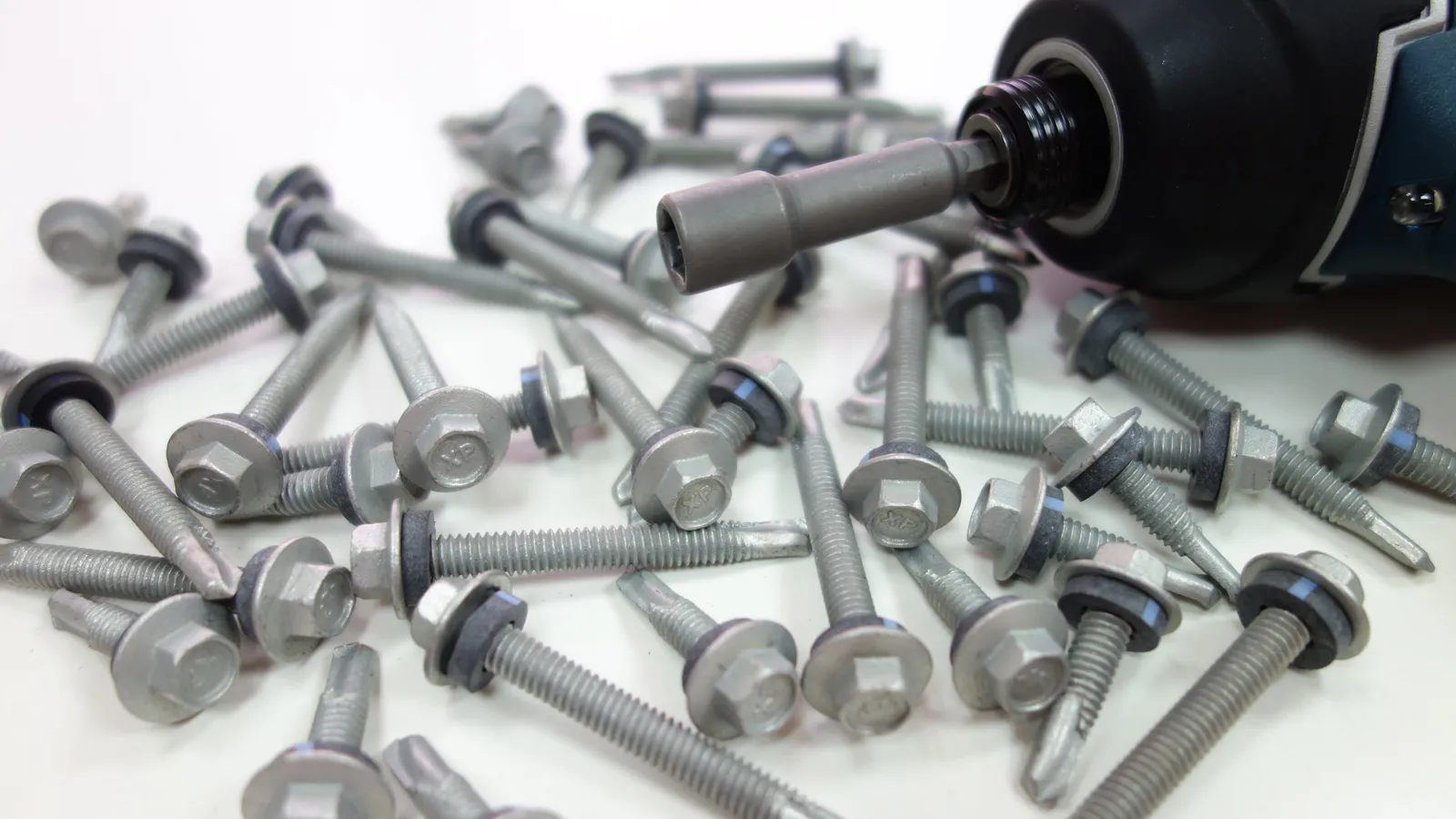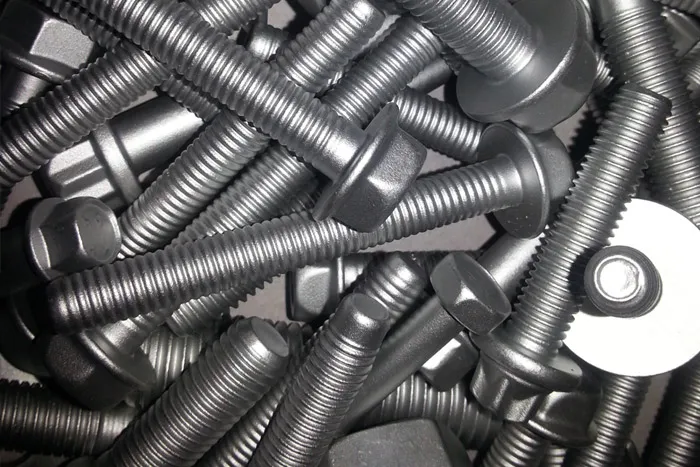Mechanical plating is an effective means of applying zinc, tin, or other ductile metals or mixtures of ductile metals to steel substrates. The process advantage over barrel electroplating is that innovative blends of corrosion resistant and/or sacrificial metal powders can be easily blended together and applied to the plain steel fastener, often with less cost and lower environmental impact when compared to electroplating.
In the mechanical plating process, impact energy is transferred from a rotating open-ended oblique barrel through glass beads, resulting in the cold-welding of fine metal dust particles to the substrate. The resulting deposit is slightly porous, matte in finish, and provides corrosion protection to the articles so plated without introducing hydrogen embrittlement into the part. It is therefore used widely to provide corrosion protection to heat-treated and high strength fasteners.
JC Grand mechanical alloy coatings consist of a minimum thickness, high-density compositions of zinc alloy intermetallics. When combined with clear (Chrome VI free) passivating sealers, the resulting surface is ideally suited for the most extreme outdoor climates. Not only can the coatings achieve high marks when tested according to accelerated corrosion testing standards (ASTM B117, ISO 9227, AS3566-2, and Nordtest), most importantly, these coatings perform exceptionally well in real-world environments after installation.
For specific applications, the base mechanical coating + sealer can be combined with a range of highly durable organic topcoats to meet specific requirements. The surface properties of the mechanical coated surface offers a substrate to achieve much stronger adhesion of organic topcoats compared to smoother electroplated finishes.
Unlike zinc electroplated parts, there is little to zero risk of hydrogen embrittlement associated with the mechanical deposition process. This is increasingly important on high strength parts such as 9.8 or parts above a Rockwell C38. When a part is zinc electroplated, atomic hydrogen is generated on the surface of the part when it is immersed in the electrolyte solution. The hydrogen diffuses into the substrate and some remains on the surface, which may cause hydrogen-induced stress corrosion. The electroplated surface forms a barrier that locks hydrogen into the part and may not allow it to escape, thus the hydrogen is forced into voids in the part which can lead to dramatic failures. Due to the nature of mechanical alloy coatings, no hydrogen is introduced from the coating or the application process.

